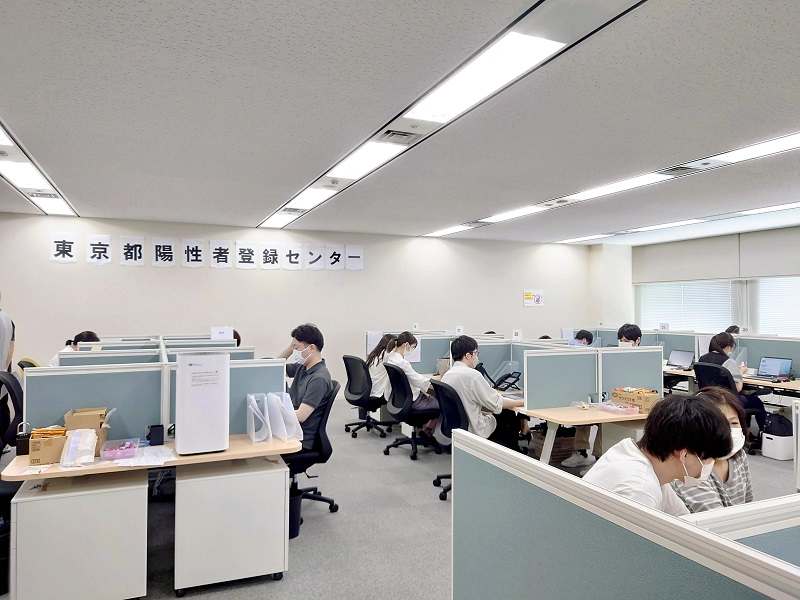Prefectures reluctant to roll out govt’s home-test framework

Staff are seen at a center that registers COVID-19 cases on Aug. 3.
15:15 JST, August 12, 2022
Only 16 prefectures have adopted a central government system of confirming coronavirus cases detected through self-administered tests, due to difficulties in securing doctors to confirm the results and distributing home testing kits, according to a Yomiuri Shimbun survey.
Under the system, people who test positive in an antigen test kit are supposed to contact a dedicated center in their municipality. A doctor stationed at the facility confirms the result and instructs the patient to recuperate at home.
The system, which is aimed at easing the pressure on fever outpatient clinics amid the seventh wave of the pandemic, was devised during the sixth wave, but only Chiba, Kyoto and Okinawa prefectures adopted it.
The central government asked all prefectures to roll out the system on July 21, but in a Yomiuri survey of the nation’s 47 prefectures, only 16, including Tokyo and Osaka, had adopted the system as of Thursday.
Many of the prefectures that adopted the system have highly populated areas and have logged high numbers of infection cases.
Eighteen prefectures, including Iwate and Shimane, said they are planning to introduce or are discussing the introduction of the system, while 13 prefectures, including Gunma and Okayama, said they have no plans to do so.
Five prefectures, including Kagawa, cited as the reason for not introducing the system difficulties in securing doctors, who are needed to confirm test results.
Ishikawa Prefecture, which is considering introducing the system, said it must coordinate with a local medical association while also handling the vaccination campaign.
The distribution of test kits is another challenge. The central government supplies test kits to municipalities, which are urged to make them available for free at drug stores and fever outpatient clinics for people with COVID-19-like symptoms.
“I wonder if clinics will be willing to cooperate in distributing kits without remuneration,” a Saga prefectural official said. “And if they are distributed at pharmacies, customers risk coming into contact with people infected with the virus.”
Some people have expressed concern that centers are making judgments based solely on photographs of test-kit results.
“It is impossible to verify if the test was really conducted or the procedure was followed correctly,” said an official of Hiroshima Prefecture, which has not yet introduced the system.
Among prefectures that have introduced the system, challenges have been encountered. In Saitama Prefecture, about 1,200 cases a day were being processed by five prefectural officials with doctors’ licenses and cooperating medical institutions.
Following access problems with online applications for test kits, the procedure was revamped and now about 1,700 cases can be handled.
On Aug. 3, the Tokyo metropolitan government started accepting applications from patients in their 20s who are either asymptomatic or have mild symptoms, and it has the capacity to process 3,000 applications a day. However, as it had only been receiving around 1,000 applications per day, on Tuesday it widened the scope to include people in their 30s.





